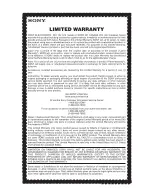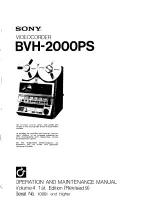
DResearch – User Manual TeleObserver MR3140
2011-02-03
12
1.10 System components and device features
The complete system consists of three different modules which communicate with each other via a
proprietary software data protocol which is the same irrespective of the operating system.
The device MR3140
Data recording and storage of video streams with metadata according to the
predetermined configuration
Storage on a removable hard disk
Connection of up to two control monitors
Function and configuration: see following chapters
Default IP address of the device when shipped: 192.168.0.1
Service computer and analysis station
Usually the review station is used for analysing the recorded data. A service laptop is often employed for
installation, configuration and system maintenance. A standard commercial computer can be used.
Currently DResearch offers two software packages:
Central Management Software (CMS)
with the modules Vision, ImageFinder and SystemManagement for
Visualisation of recorded data (video, add. data)
Searching recorded data according to freely configurable parameters (e.g. time, events etc.)
Display of live video sequences (incl. additional data)
Device configuration
Operating systems (OS) supported: Windows XP Prof. and Vista
ImageFinderNX
The analysis software ImageFinder NX is the successor of the CMS module ImageFinder
and provides a convenient search and analysis of the recorded data. The software is
usable in conjunction with the USB-TTU. A direct search at the device is possible from
version 1.5. The usage requires Windows operating systems Windows XP Prof. (SP 2)
or Vista.
The previous CMS module ImageFinder will be developed only until the end of 2009 and
then discontinued!
The TeleObserver Transfer Unit (USB-TTU)
This separate device (USB-TTU) has the following uses:
Taking the removable hard disk for the evaluation/analysis of data.
Formatting the hard disk.
Activating removable hard disks and decoding data (when using DR.Secure
encryption).
Displaying synchronous video images.
Analysing of the recorded data (video, audio, add. Data, such as IBIS and GPS).
Creating backups.
Export of video data, printing of pictures etc.
(For a detailed description of all the features have a look in the manual of the USB-TTU.)













































